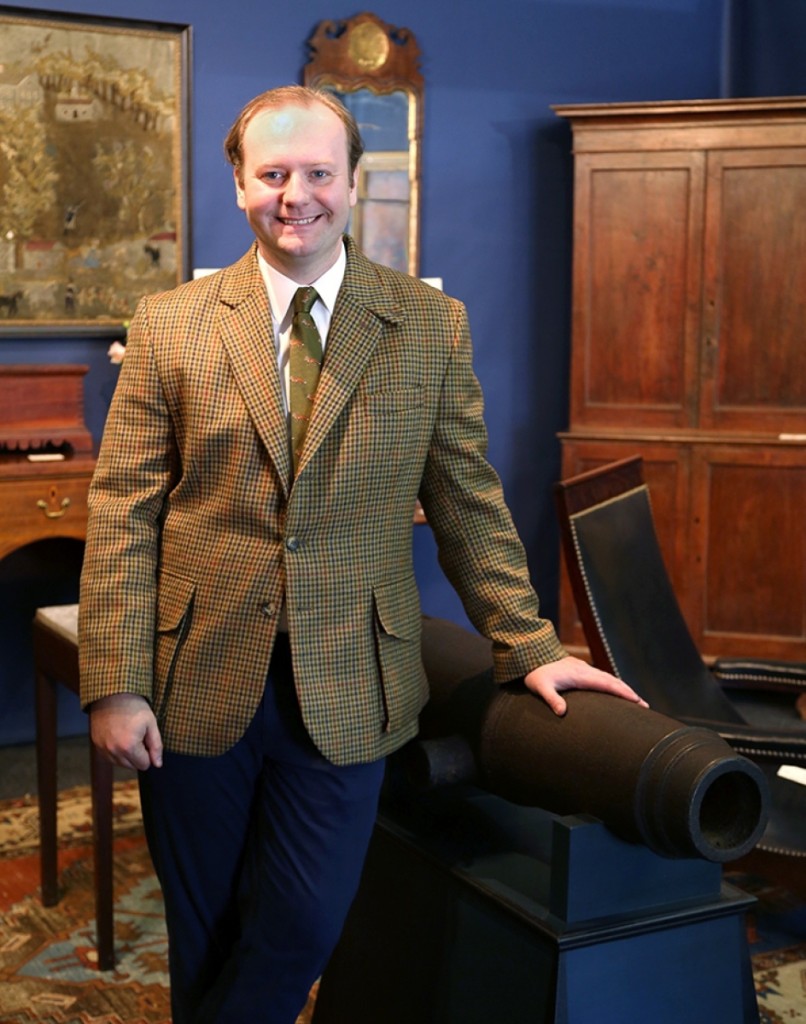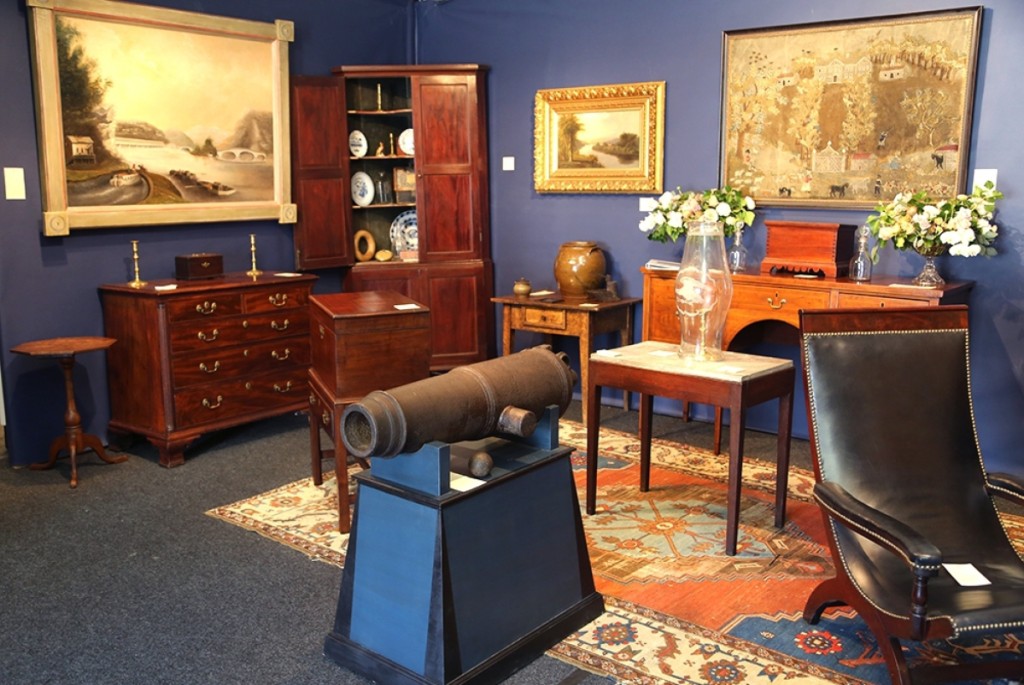
At 32, Taylor Thistlethwaite is one of the youngest antiques dealers on the circuit. The Kentucky native radiates a Southern charm that runs as deep as his appreciation for the material that hails from below the Mason-Dixon line. We caught up with him at the Philadelphia Antiques and Art Show to get his take on what it’s like to be young in the business nowadays, his thoughts on the market and how he manages to fit all of his inventory into his townhouse.
How did you get started?
When I was a little kid, my parents were passionate collectors. Most people would consider me tortured because my parents never took me to Disney World, but I knew every antiques shop up and down the Shenandoah Valley. I used to get thrown into attics and they’d yell, “Taylor, you see anything up there?!”
What area do you love dealing in most?
I started off as a huge fan of Southern furniture. I did the MESDA [Museum of Early Southern Decorative Arts] Institute for three years and it was one of the best experiences of my life. If I had to express a passion within that genre, I would say the early Chippendale period, focusing mostly on North Carolina, Virginia and Maryland, along the Eastern seaboard. The most elegant things come from that period. It’s not fancy. The simplicity and the beauty, I think, is just nailed in the South.
I’ve had to expand my eye more and more, though, because let’s be honest, Southern furniture is hard to find. I have always been around Philadelphia furniture and, fortunately, I think most Philadelphia forms are just perfect.
Do you have an overarching philosophy to dealing?
If you don’t like the piece you are selling, you’ll never sell it. I’ve bought things and thought “Everybody else likes it, I should like it, too,” and those are the pieces that are still in my living room. When you have a passion for individual pieces, those are always the first to leave. When you can connect with a client on a level that shows your excitement in something, that’s when things start to move along. That’s when dealers are happiest, when we can go up to a client with real enthusiasm.
My philosophy for selling antiques is that I want to build a connection with the person. Help them understand what they like about things. I studied with Sumpter Priddy and he ingrained in me an academic approach: you have to know what you’re selling, you have to know the details, and you have to be honest.
How do you think your experience today is different than it might have been for a dealer your age 30 years ago?
Three decades ago, dealers had to show up with great inventory and push hard to be in some of the better shows on the circuit. Nowadays, there aren’t that many young people doing this and everyone wants to see you succeed. There’s a lot of camaraderie.
What is your take on the market?
I guess I never knew the good times. Some dealers will be upset when they have a $10,000 show and I’ll say, “Whoo! I had a $10,000 show!” I think any success is great. I also think that the market is picking up, everything is cyclical.
How many times have you heard that the younger generation is killing the market?
Oh, all the time. But it’s not true. I have great clients in their mid-30s, I sold something to someone the other day who was in their 20s. You have to realize they’re not going to be buying the big things, they’ll buy the little delft plate. That’s why I always have a little thing in the booth that won’t break the bank and you can take it home and be proud of it.
And I don’t expect my clients to be in their 30s either. Between kids and education, you’re later in life when you can spend time to appreciate this material. When you’re in your 30s, you want to travel and get out and explore. People aren’t decorating their homes because they aren’t in their homes, but they’ll reach a point when they don’t want to travel as much and they want to enjoy where they live. There’s a great philosophy behind surrounding yourself with beautiful things, but it’s just happening at a later point in life. I’m always positive about it because it takes new people to come along and to excite the market. I’m looking for that next Jackie O.
What’s your strategy with inventory?
I try to stay very lean and not hold a huge inventory. Really just enough to fit in my living room. I went from living on a farm in Kentucky to living in a small townhouse in Virginia, so now I’m really limited in what I do. If I don’t find a home for this cannon here, I don’t think my wife is going to be happy. The kitchen is the only place I can put it!
And where do you find it all?
The best thing I can tell you with inventory is that you have to be all over the place. Look for the things in areas where you wouldn’t expect to see them. Some of the best New England furniture I’ve found has been in obscure Southern homes because that’s what they were collecting in the 50s and 60s. I found unbelievable East Coast stuff in Missouri. You just have to keep your eyes open, search the auction houses, go online, go everywhere. There aren’t many left, but if you know a picker, love him.
So what do you do when you’re not dealing?
My wife would say I’m always dealing. But I really love fishing, too.
-Greg Smith





